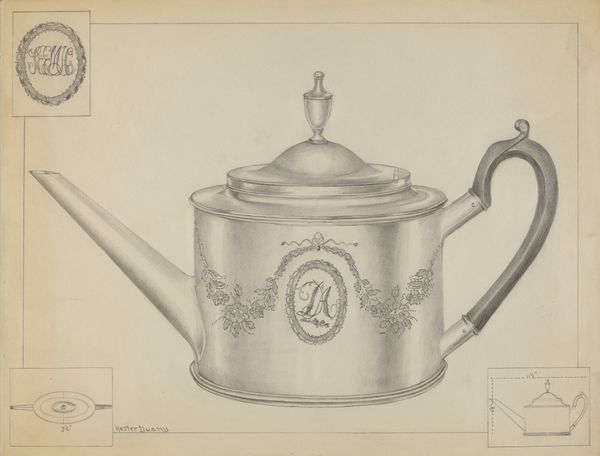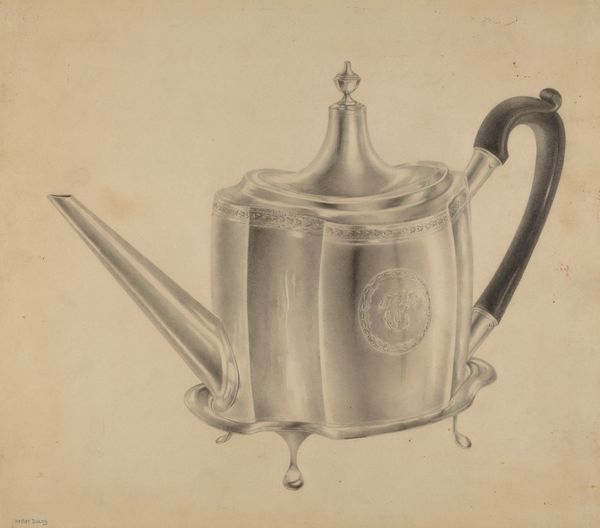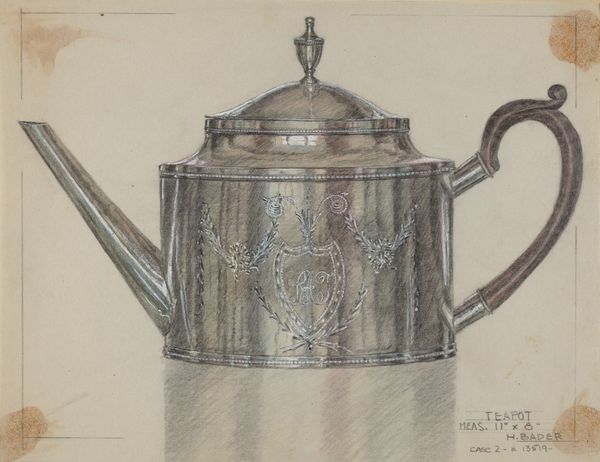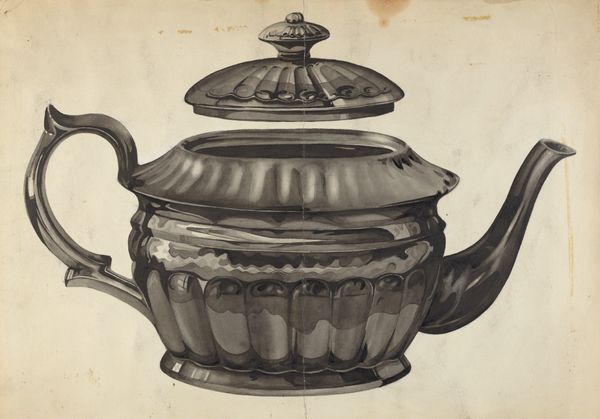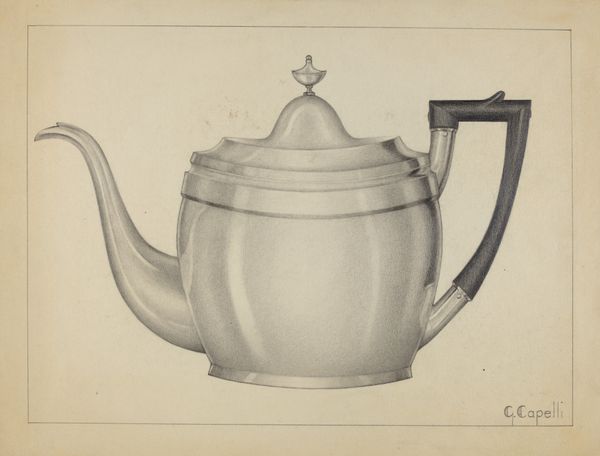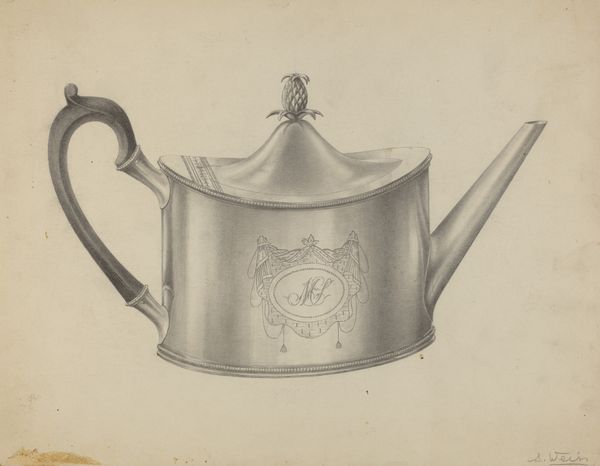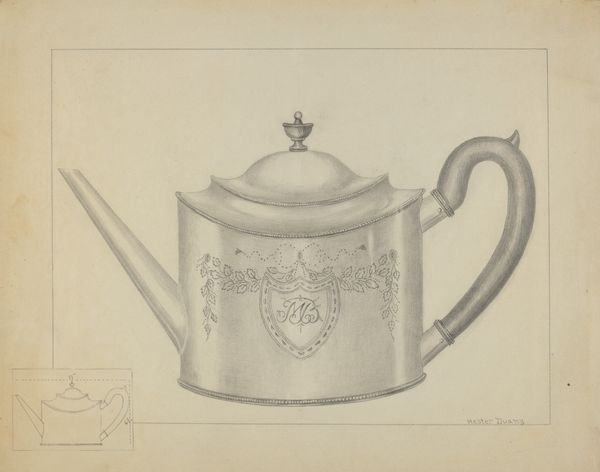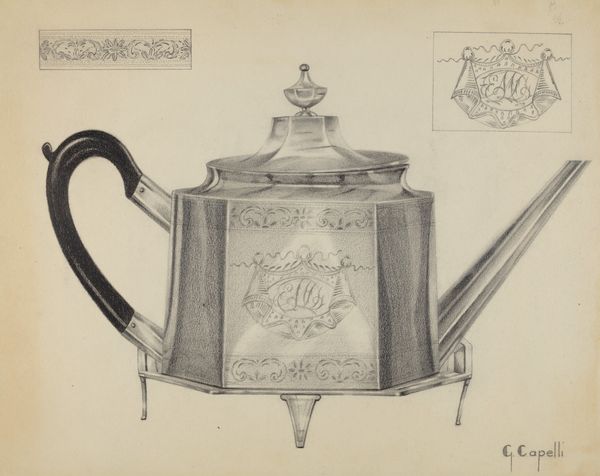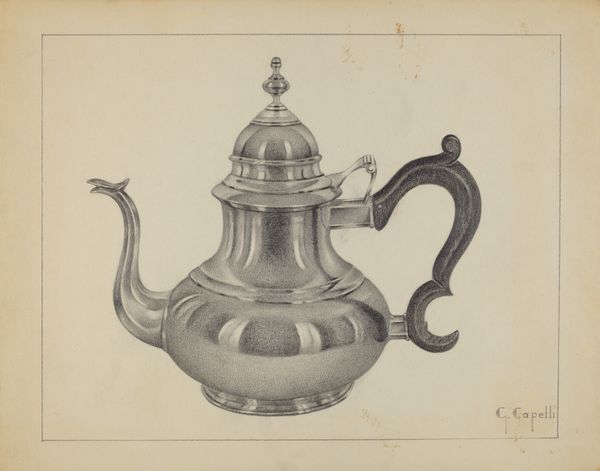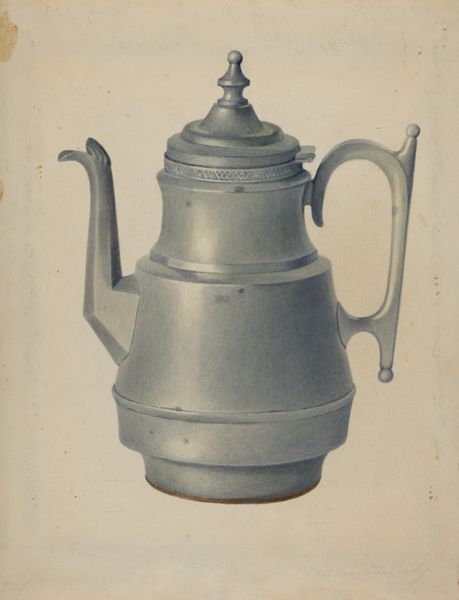
drawing, pencil
#
drawing
#
pencil drawing
#
pencil
#
realism
Dimensions: overall: 23 x 30 cm (9 1/16 x 11 13/16 in.) Original IAD Object: 12" wide; 7 3/4" high
Copyright: National Gallery of Art: CC0 1.0
Editor: This is Hester Duany’s "Silver Teapot," made around 1936 using pencil on paper. The realism is incredible. What’s particularly interesting to me is how this everyday object becomes something quite formal through Duany’s rendering. How do you interpret this work, particularly given its creation in the 1930s? Curator: That's an insightful observation. Looking at this teapot, I see not just a functional object, but a symbol laden with socio-cultural information. The 1930s were marked by economic depression, yet here's an artwork dedicated to a luxury item, carefully rendered. Why depict something so seemingly unattainable for the majority at the time? Editor: So, you're saying its presence during that period offers a commentary on the values of the time? Perhaps a nostalgic look at a past era of opulence, or even an aspirational image for the future? Curator: Exactly. It invites us to consider the role of art in reflecting and shaping societal desires. This pencil drawing becomes a record of social aspirations and the lingering influence of a hierarchical society, particularly regarding social conventions like afternoon tea. Notice the monogram; that suggests the importance of lineage and heritage that such domestic objects conveyed. Does knowing this change your initial reaction at all? Editor: It definitely adds a layer of complexity. Initially, I appreciated it aesthetically, but understanding the historical context reveals the teapot as a powerful symbol of social stratification. Curator: Precisely. Art often operates on multiple levels simultaneously. And our job is to peel back those layers, considering the societal forces that informed the work's creation and its reception. Editor: I see the artwork in a new light, considering the implications of that luxury item during a time of hardship. Thank you! Curator: It was my pleasure. This Silver Teapot reminds us to ask 'for whom and for what purpose' when looking at art.
Comments
No comments
Be the first to comment and join the conversation on the ultimate creative platform.
